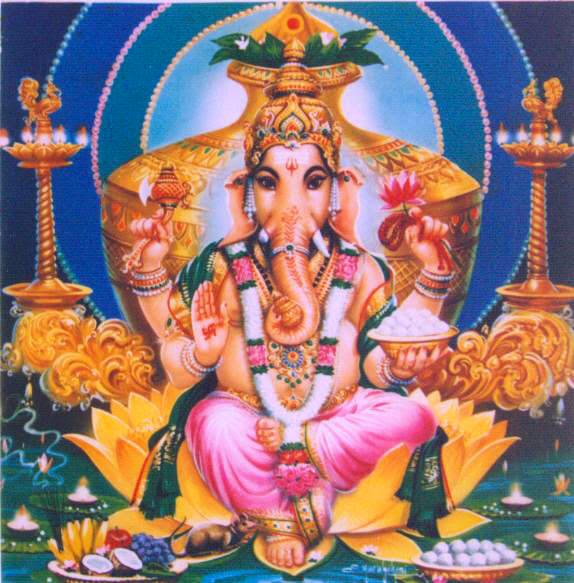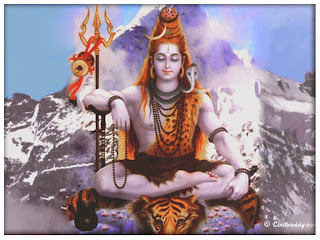

It is the celebration of brothers and sisters. It is one festival that primarily The sisters tie that thread of love to their brothers amongst chanting of mantras, put roli and rice on his forehead and pray for his well being. She bestows him with gifts and blessings. The brother also wishes her a good life and pledges to take care of her. He gives her a return gift. The gift is the physical acceptance of her love, reminder of their togetherness and a symbol of his pledge. The legends and the reference in history repeated, the significance of the festival is emphasized belongs to the North and Western regions of India but celebrated throughout the country
In Northern India, Rakhi Purnima is also called Kajri Purnima or Kajri Navami, when wheat or barley is sown, and goddess Bhagwati is worshipped. In Western states, the festival is called Nariyal Purnima or the Coconut Full Moon. In Southern India, Shravan Purnima is an important religious occasion, especially for the Brahmins.
Raksha Bandhan is known by various names: Vish Tarak - the destroyer of venom, Punya Pradayak - the bestower of boons, and Pap Nashak - the destroyer of sins
Sravani is an ancient Vedic festival traditionally associated with the Brahmins on which day they change their sacred thread. Both Raksha Bandhan and Sravani are celebrated on the full moon day of the month of Shravan (August).Rakshabandhan or Rakhi which is celebrated on a full moon day in the month of Sravan (August) is a day when brothers and sisters reaffirm their bonds of affection. It is usually a festival of the Hindus though today people from different religions participate as well.Once, Indra was confronted by the demon king - the Daitya-raaja - in a long-drawn battle. At one stage, the Daitya-raaja got better of Indra and drove him into wilderness. Indra, humbled and crest-fallen, sought the advice of Brihaspati, the Guru of Gods. The Guru told him to bide his time, prepare himself and then march against his adversary. He also indicated that the auspicious moment for sallying forth was the Shraavana Poornima. On that day, Shachee Devi, the wife of Indra, and Brihaspati tied Raakhis around Indra's right-wrist. Indra then advanced against the Daitya-raaja, vanquished him and reestablished his sovereignty.
Sisters tie colourful threads or rakhis on their brother's wrists. The brothers in turn promise to protect their sisters and give them gifts. Around mid-August, on Shravan Purnima, Once, Indra was confronted by the demon king - the Daitya-raaja - in a long-drawn battle. At one stage, the Daitya-raaja got better of Indra and drove him into wilderness. Indra, humbled and crest-fallen, sought the advice of Brihaspati, the Guru of Gods. The Guru told him to bide his time, prepare himself and then march against his adversary. He also indicated that the auspicious moment for sallying forth was the Shraavana Poornima. On that day, Shachee Devi, the wife of Indra, and Brihaspati tied Raakhis around Indra's right-wrist. Indra then advanced against the Daitya-raaja, vanquished him and reestablished his sovereignty. Hindus all over celebrate Raksha Bandhan. "Raksha" means protection, "bandhan" means bound or binding. The festival is also known as Balev.Raksha Bandhan is celebrated in different forms in different areas and it is also known by the names like rakhi, rakhri and saluno.
'Raksha (protection) Bandhan' (band) (a festival celebrated in north India) in August) signifies the sanctity of the blood relation between a brother and his sister. In the month of August every year, sisters tie raakhi (band) on the wrists of their brothers in a reaffirmation of this relationship. They wish each other's well-being and the brother vows to go to his sister's aid whenever the need may arise.
As per the traditions, the sister on this day prepares the pooja thali with diya, roli, chawal and rakhis. She worships the deities, ties Rakhi to the brother(s) and wishes for their well-being. The brother in turn acknowledges the love with a promise to be by the sisters' side through thick and thin and gives her a token gift. Raksha Bandhan tightens the bond of love between the sister and brother
Raksha Bandhan is celebrated on the full-moon day in the month of Sravan (July- August). This day symbolises love, affection and a feeling of brotherhood and sisters tie a piece of thread, called rakhi around the wrist of their brothers, praying for their long life and happiness. This tradition of tying a rakhi has been coming down through the ages, since the vedic times.
HISTORY
The festival nurtures a rich heritage of legendary traditions, some rooted back to the ages of the great epics. In the Hindu tradition the Rakshaa has indeed assumed all aspects of protection of the forces of righteousness from the forces of evil.According to the Mahabharata, Yudhishthira, the eldest of the Pancha Pandyava (the five brothers belonging to the family of king Pandu), asked Sri Krishna, an incarnation of lord Vishnu, how best he could guard himself against impending evils and catastrophes in the coming year. Krishna advised him to observe the Rakshaa Ceremony. He also narrated an old incident to show how potent the Rakshaa is. It went like this.Once, Indra, the king of heaven was confronted by the demon king - the Daitya-raaja - in a long-drawn battle. At one stage, the Daitya-raaja got better of Indra and drove him into wilderness. Indra, humbled and crest-fallen, sought the advice of Brihaspati, the Guru of Gods. The Guru told him to bide his time, prepare himself and then take on the mighty demon. He also indicated that the auspicious moment for sallying forth was the Shraavana Poornima. On that day, Shachee Devi, the wife of Indra, accompanied by Brihaspati tied Raakhi around Indra's right-wrist. Indra then advanced against the Daitya-raaja, vanquished him and reestablished his sovereignty.This is how Raksha Bandhan came into being in the ages of old Hindu mythology and has transcended into the modern ages acquiring more of new and modified customs with itself. The oldest story may have roots in the days when devas (gods) and asuras (non-gods) were engaged in a fierce struggle to dominate the creation. Indra, the king of devas, was defeated several times. Indrani, his consort, then did penance and prepared a bond of protection which she tied on the wrist of Indra. With the help of its power he defeated the asuras.
Another mythological story tells how Bali, the ruler of the earth, had to give away his whole empire to God Vishnu who appeared to him as a dwarf. Raksha Bandhan is believed to mark that event as well.
In the Hindu tradition the Rakshaa has indeed assumed all aspects of protection of the forces of righteousness from the forces of evil. Once, Yudhishthira asked Sri Krishna how best he could guard himself against impending evils and catastrophes in the coming year. Krishna advised him to observe the Rakshaa Ceremony. He also narrated an old incident to show how potent the Rakshaa is.
http://en.wikipedia.org/wiki/Raksha_Bandhan
http://en.wikipedia.org/wiki/Rakhi
http://hinduism.about.com/library/weekly/aa080800a.htm
RAKSHA-BANDHAN








